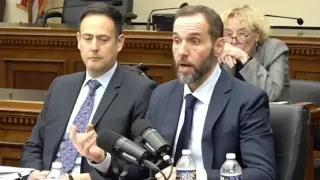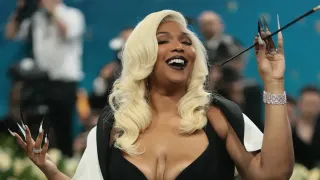August 8, 2014
QueerFilm/Culture: Telling Our Stories
James Nadeau READ TIME: 4 MIN.
"Film Culture." Take the phrase and parse it out. What exactly are we talking about here: a culture based around film/cinema or the culture of film and cinema?
As this will be a column not just about film but specifically about LGBT film, then it would make sense to take the phrase "film culture" and apply both interpretations. How can you talk about LGBT film (moving forward I'm going to refer to LGBT film as "queer" just for simplicities sake. I can footnote several reasons for this but you wouldn't read it anyway) without speaking to the culture it inhabits? For the LGBT community film is reflective of and I believe indicative of our respective culture. But what does that mean, you ask? Well, I'll tell you.
Film can and perhaps should be aspirational. Film serves the purpose of telling us stories, and for the queer community, telling our stories. This is crucial. Cultural invisibility is powerful. It deters, undermines, and effectively removes any possibility of validation. Early queer filmmakers knew this. Representation was powerful.
Look at the films that emerged in the late 80s and 90s: "Desert Hearts," "Mala Noche," "The Watermelon Woman," "The Living End," "Parting Glances." These films told personal, complicated stories about queer people. And they were shocking for their honesty in their portrayal of gays and lesbians (films by, for, and about the transgender community have a much more complicated history that I hope to tackle in a future article). They were shocking not only because we hadn't seen such images before, but also because they felt real. They were stories about our lives and our experiences using the tropes of mainstream filmmaking.
There is clearly a history of queer representation that predates these films, which has been unfortunately relegated to histories of experimental or avant garde/porn genres. So I guess the key term is "mainstream" filmmaking. We are looking at cinema that is created in the image of the mainstream, which means Hollywood-style narratives. At some point I'd love to explore the queer avant garde (and there are several recent documentaries that have explored this genre. The Boston LGBT Fest has screened a couple in the past few years) but for the time being I'll be focusing on the above. Simply because at the end of the day, narrative film (be it fiction or non-) is what we watch.
I remember the first time I went to a film festival and watched a gay film surrounded by other gay people - a film that had non-porn content and meaning to me. It's transformative. I sat in the theatre at the MFA, as an audience member (but fledgling filmmaker) of the Boston LGBT Film Festival (not yet involved - it took a mere two screenings before I was talking to Kathleen Mullen and was soon roped into the festival world - see below), and watching a film that would change my world-view about what queer film was and could be.
And now, after 13 years in the world of LGBT cinema as both a filmmaker and executive director of the Boston LGBT Film Festival, this world-view is in a state of flux. Queer films have entered the mainstream (they are arguably part of that mainstream depending on your perspective) and festivals and filmmakers have had to change. I should qualify this by saying I'm restricting this "mainstreaming" to North American and Western European film markets. Queer films are still political statements outside of the mainstream in much of the world. As a person heavily involved in the LGBT cinema world I've been exposed to more queer films than I can count. The films and the stories they tell get more diverse and more people are creating their own personal visions of what queer means. You never know when a film will challenge everything you thought LGBT can or should mean.
We go to the cinema to see stories being told. Film plays a huge role in our lives. Ok, maybe just mine. But I'm willing to bet that for most of us film reminds us of people, places, events, and moments in our lives. We've come a long way from "Boys in the Band" and "Making Love." We filled the gap that Hollywood avoided. In short, LGBT culture brought us QueerFilm. I'm looking forward to using this column to speak about the past, present, and future of Queer cinema.






